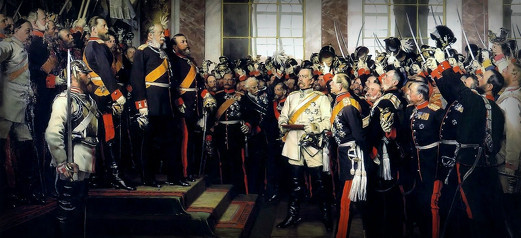History (Part 1 & 2)
-----
“For the want of a nail the shoe was lost,
For the want of a shoe the horse was lost,
For the want of a horse the rider was lost,
For the want of a rider the battle was lost,
For the want of a battle the kingdom was lost,
And all for the want of a horseshoe-nail.”

The arrival of the European traders in 16th century Japan had a profound effect on the arpichalageo. The very first traders were Portuguese, arriving in 1543. Portuguese trade increased year after year, and eventually took Nagasaki to set up their base of operation upon the invitation of the Ōmura clan in 1561, the Ōmura later converting to Christianity.
It was at this time that the frail Ashikaga shogunate found itself with a powerful new enemy in the formidable Oda Nobunaga. By 1568, Nobunaga had made the Ashikaga shogun his puppet, though had encountered a major alliance against his power. It was after his defeat at Anegwa, and continued problems with the Ikkō-ikki that Nobunaga opened up fully to the Portuguese. While sources differ on whether he had been baptized or not, a permanent Portuguese mission opened up in Osaka, and Nobunaga’s troops embraced western arms in their wars. It was the arquebuses at the Battle of Nagashino. The destruction of the Takeda, Ashikaga, and other such clans gave Nobunaga a stranglehold of power, and declared himself Shogun in 1581.
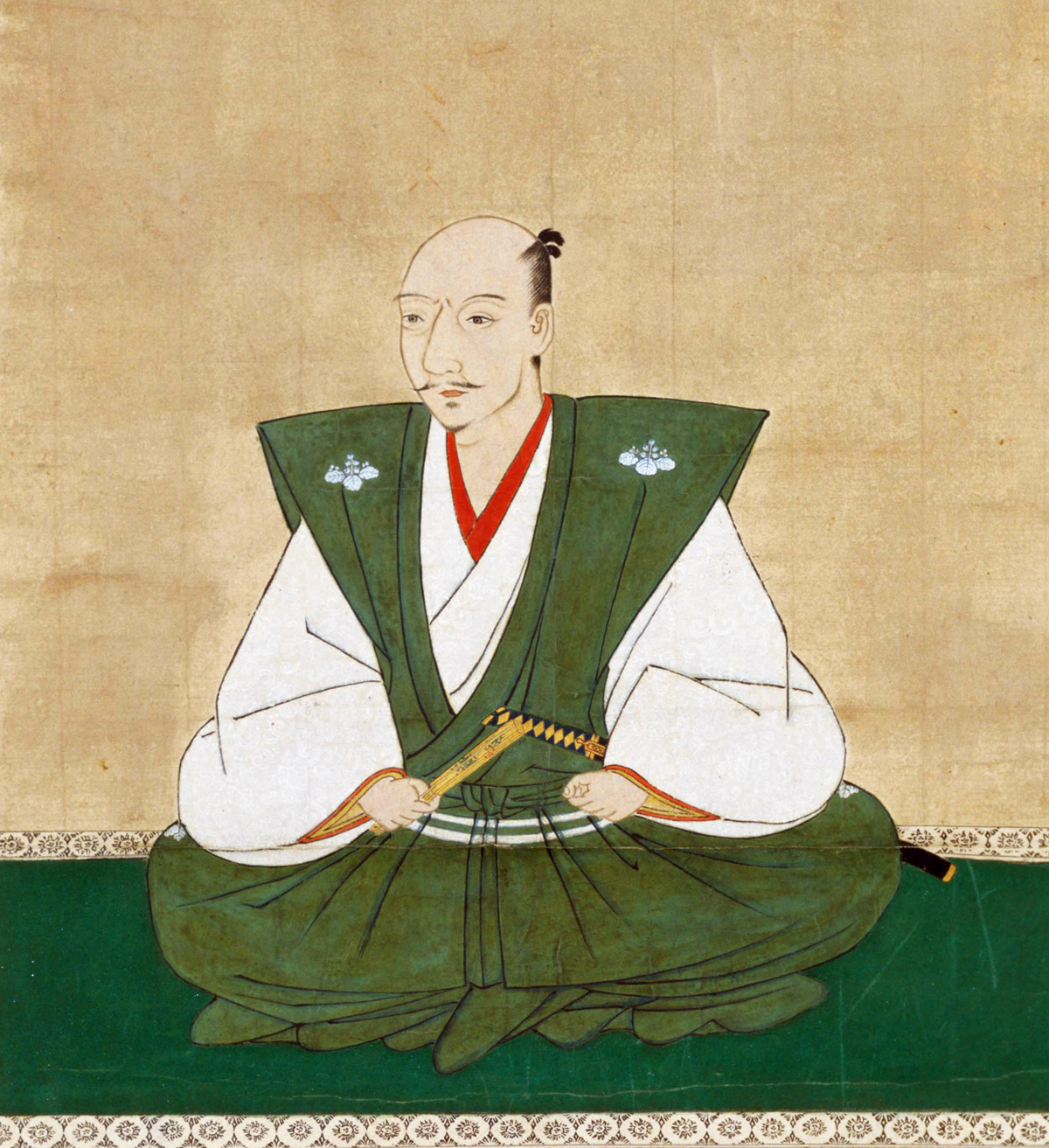
However, upon Nobunaga’s death in 1653, assassinated by the Ikkō-ikki, his shogunate collapsed almost instantly. Toyotomi Hideyoshi failed to subdue the many aspirants to Nobunaga’s position, and seeing this weakness, the Mori clan, emboldened by the resurgent Ikkō-ikki, and the Chiba clan, launched their own bids for power. This period from 1584 on was known as the “The Wailing Era” of Japan, wherein the daimyo ruled in their traditional manner in some domains, while in others the more populist Ikkō-ikki ruled in others. As the Ikkō-ikki grew in strength and power, many daimyo turned to Portugal to acquire firearms, which often required a conversion to Christianity. However, with the increased role of Buddhism in the Ikkō-ikki rebellions, many daimyo embraced Christianity as a political tool to help combat the populism found in the rebels, both to secure Portuguese assistance and to provide their subjects an alternative to Buddhism.
As daimyo converted to Christianity, there were increased pressures upon rival daimyo to convert, fearful of letting their rivals have such a large military advantage. This would severely disadvantage the more traditional daimyo, particularly the Mori and Chiba, who were unable to acquire a significant amount of firearms until the arrival of the Dutch in 1605.

The Dutch were able to make initial headway into Japan by dealing with daimyo who still held out against converting to Christianity. By being willing to do business with anyone, regardless of faith or background, allowed clans such as the Tokugawa to field modern armies. This threatened many of the major players of the region, particularly the Ōmura clan and others who had sided with the Portuguese early on. The threat to the current powers by heathen clans growing in power was noted, and with Portuguese blessing, the Ōmura clan and others launched an attack on the clans seeking to align themselves with the Dutch, beginning a period called the Nanban Wars.
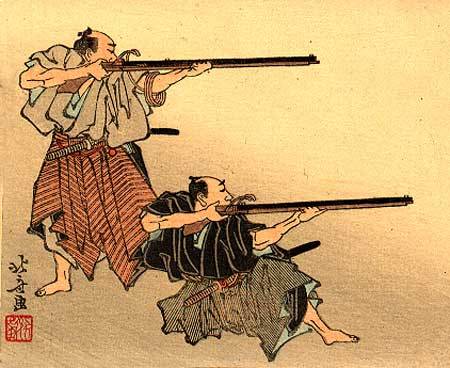
Seeing this as good of an opportunity as any, Dutch privateers immediately began attacking Portuguese shipping, scoring several major victories. However, on land, the Japanese allies of the Dutch did not have the resources or training that the Portuguese affiliated clans had accrued over the years. Worse, the Ikko-ikki rebellion that had mostly been contained to the northern lands of Honshu had begun a resurgence, threatening Edo on multiple occasions. It became clear to the Dutch that the Buddhist allies it had been relying on would not be able to suffice.

It was Jan Pietersen, a Dutch priest of poor morals, a flair for the dramatic, and an impressive ability to pick up foreign languages, that would be key to helping the Dutch retake the initiative in the war. By 1613, the Dutch had achieved naval supremacy for the most part, but clans such as the Ōmura were more than a match for the pro-Dutch factions. It was determined by the Dutch that one of the major issues of the war failures of Tokugawa was not his weaponry, but rather the inferiority of numbers. Many of the vassal Christian clans, while not having a particularly loyal relationship with their suzerain, did have a stronger bond with their new Christian god. Many of these clans were incredibly fearful that the heathen clans would take hostile acts against Christians, so chose to stay with their masters. Pietersen, a Protestant preacher, was able to use evangelical techniques to convince both daimyo and peasants to abandon the “Catholic” faith, and instead embrace “Protestantism” (though more often than not keeping many of the Catholic rituals). Pietersen aligned Protestantism with freedom, choice, and rebellion against the unpopular major lords, causing a defection of many daimyo from both Catholicism and Buddhism. While the war continued on for several years, the conversion of Tokugawa to Christianity (relenting after realizing it was losing even further sway). Many Ronin also took up the Protestant cause, and the fall of Kyoto in 1638 effectively sealed Catholicism’s fate in Japan.
The Dutch victory left the island without a clear major power. Tokugawa did not have the allies nor the raw numbers to achieve a new shogunate, and aside from the Tokugawa, none of the major clans survived the Nanban Wars intact. Furthermore, with the capture of Edo by the Ikkō-ikki in 1641 (using cannons purchased from the Dutch) forced the remaining clans to work to preserve their own power in the face of increasing commoner dissent. This era became known as the “Cold War”, as battle lines began being drawn. Southern Japan, which included all territory south and west of Osaka, was Christian, with a traditional daimyo leadership in the various different realms, and an increasingly powerful merchant caste unsatisfied with the current order, and the North, which eschewed daimyo in favor of commoner rule with heavy Buddhist influence. This era was alternatively known as the “Edo Period” for the North, the “Alliance Era” for the South, and the “Two Realms” period for the whole of Japan. This period would continue under Dutch supervision for over 200 years until the arrival of the Americans as a major force in the 1860s.
-----
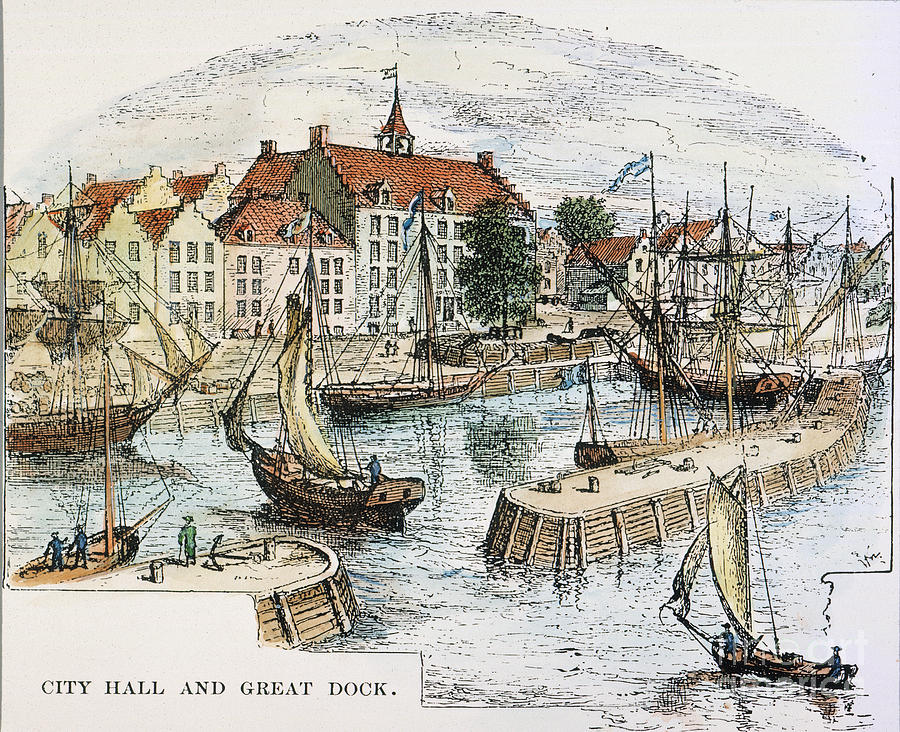
As the Dutch were concluding one overseas venture in the Pacific, a new opportunity arose in the Atlantic. The discovery of the Americas had galvanized a variety of European nations, the Dutch being one of them. The Dutch West Indies Company established itself in what is now known as Manhattan, building fort to help facilitate the valuable fur trade in the region. New Amsterdam as it was called quickly became one of the most cosmopolitan cities in the Americas, with nationalities and faiths of all sorts. It was here that in 1645, a deeply pious man by the name of Peter Stuyvesant, a student of Jan Pietersen was appointed the Director-General, and enacted a policy of religious intolerance in favor of evangelicalism. While New Amsterdam would fall in 1664 to the English, the Dutch Reformed Church’s practices of evangelism and fiery sermons would be mimicked by other American churches during the “Great Awakening”
The British North American colonies were, of the three colonial major powers, particularly unique. While the Spanish colonies were formed primarily to extract gold and silver (and some forcible conversion to Catholicism), and the French mostly focusing on trading in their territories as opposed to large scale settling, the British North American colonies were a perfect combination of settlement possibilities and lax religious enforcement. Without fearing persecution, a variety of different religious groups came to the British colonies, helping found colonies such as Massachusetts, Pennsylvania, and Maryland. These religious groups were, for the most part, significantly more devoted to their faith than mainline Catholics and Anglican. However, from the mid 17th century until 1743, as English colonies grew, the propensity for religious domination of colonial life had subsided. However, in 1743, led by Jonathan Edwards, and later, George Whitefield, many churches in New England discarded the theologically dense sermons in favor of a more “fiery” approach. Sermons would tap into their parishioners passions, and would engage in a style that would directly engage the churchgoers, instead of simply lecturing them.

This religious revival reestablished the church’s role in the colonial political scene, and upon the victory in the French-Indian War against the hated Catholics, a second wave of religious awakening hit the colonies, this time the focus being on those who traditionally did not attend church. Evangelists would travel to the backwoods settlements, gathering new converts, teaching study of the bible, and truly expanding religion’s reach into the homes of many who had not initially given it the time of day. This network of evangelicals, with their connections in a variety of different communities, would become key in the later struggle during the War of American Independence. Decrying the British as tyrannical and an enemy to God, evangelicals were instrumental in passing on the Patriot’s message, and by 1776, well over half of the colonists were confirmed “Patriots”.
Following the Patriot victory, the Constitutional Convention in Philadelphia was held and was particularly dominated by evangelicals, particularly from New England. A variety of different key debates occurred, two among them the debate over slavery and the place of the Christian religion. For slavery, it was the Second Great Awakening in the late 1760s that had brought African slaves into White churches, and had advocated for the spiritual (though not earthly) equality of the African. However, in a debate in the assignment of electoral votes to the various states, many of the Southern states had argued for the inclusion of Africans, while Northern states argued that population for electoral votes should only be counted for free men. This coincided with a debate over the status of religious freedoms in the United States, and the protections that might be extended to non Christian faiths. Eventually George Lovell of Rhode Island found a proposal satisfying to enough parties to pass. While freedom of religion theoretically would exist, Christianity would be a prerequisite for participation in democracy. While slaves would not be allowed to participate in the democracy directly, upon their conversion to Christianity they would be counted in the population for electoral votes, giving their masters further incentive to help convert their slaves.
----------

The French revolution that had followed (in part because of) the American Revolution and the subsequent Napoleonic Wars, would be fought primarily in Europe, but its impact would be felt all the way in Japan. Upon the conquest of the Netherlands, the alignment with France under the new Batavian Republic, and the newly launched war with Britain, Dutch sailors found themselves under attack from Britain. With nearly no nation neutral in Europe, the Dutch East India Company used contacts in the United States to help shield their vessels by flying the Stars and Stripes. Dutch, and later, American, vessels flying the American flag would become the only way to safely bring in the lucrative Japanese trade, and gave American merchants but a taste of the treasures of the Pacific.
Patrick Haley, a US merchant who had gained a fortune in Japanese trade (and lost much of it following the subsequent exclusion of America once more after the Napoleonic Wars ended) was tapped later in 1824 as the Secretary of Trade for the Winthrop administration, and would be the one who helped create the “Pacific Strategy” of the United States. Under the Winthrop and subsequent administrations, the United States saw a rapid expansion westward. Already, the United States had by 1836 established a permanent settlement on the Pacific Coast, and in 1837, the newly established Republic of Texas was immediately annexed. A Mexican declaration of war in 1838 following the tensions created a four year war where Mexico City was burned and a huge swathe of territory was annexed by the United States in 1842.
The Kingdom of Hawaii was the next target of the United States. Having been unified by King Kamehameha in 1810, there had been very little contact between Catholic Hawaii and the United States, aside from the occasional Protestant priest. It was in 1839 though that some Protestant ministers were able to convince the King to abandon Catholicism in favor of Protestantism. This development, followed by the increased US presence in the Pacific, saw the United States becoming much more interested in the islands. Following the ascension of King Kamehameha II and his conversion of Hawaii back to Catholicism (as a challenge to his Protestant rivals for the throne), the United States interfered, and replaced the King with one of his brothers, while also taking a lease for a base at Pearl Harbor in 1849. Eventually, by 1854, the United States determined to annex the Kingdom, to some protest from the United Kingdom and France.
It would at last be in 1854 that the United States would make contact once more with the Japanese archipelago. Led by Rear Admiral Thomas Moore, the Americans were able to first re-establish contact with the daimyo and merchants the Americans had previously done business with. This was completely unacceptable to the Dutch East India company, which immediately retaliated by sinking the American flagship, the USS Triumphant. Seen as a major outrage in the United States, tensions rose to the point that 13 American Warships with 8,000 US Marines were sent to seize Dutch trading posts in Japan. Additional forces were dispatched in support of operations against Dutch possessions in the Western Hemisphere. For their part, the Dutch had hoped that the alliance of the Nanban Wars might be revived, but after two centuries of Dutch control of Japanese trade and their playing of various factions off one another, very few Japanese were willing to risk war in their own domains for the benefit of the Dutch. Desperate, the Dutch attempted to turn to the French and British, though they were embroiled in the Crimean War at the time. Seeing no other option, the Dutch were forced to sign the 1855 Treaty of Boston, recognizing the American holding Japan exclusively in their sphere of influence.

Following the Treaty of Boston, the United States assumed that the region of Japan was now a part of their own empire, and immediately made moves to secure the region. At 1857, a total of 23,000 US soldiers were stationed in Japan, and Thomas Moore, appointed the new Secretary of Japan, took over the old Dutch East India Company offices in Osaka. However, the real power was held by noted Japanophile and former East India Company employee Owen Rogers. Rogers was one of the few Americans who realized that the victory over the Dutch did not mean that America had conquered Japan: only its trade. Rogers realized that with two centuries of Dutch contact, the Japanese social structure had changed greatly. The south was no longer just dominated by the Christian daimyo. Instead, the merchant class, long reviled by Japanese society, had become incredibly powerful from the riches they had accumulated, and though usually Christian, tended to side more with the northern, commoner and Buddhist dominated realms. Hoping to make the delusion a reality (and earn a promotion on the way), Rogers opened negotiations with the merchants, particularly the Osaka Merchant’s Clique. However, Rogers made the first American alliances with the daimyo of Shizu and Inyo. Reporting to Moore of the ways of the heathen North, Moore ordered the bombardment of Edo, and following the battle of Narita, secured the submission of much of the North. To win over the Osaka merchants, Rogers convinced Moore to relocate to Satsuma, a move that Moore would come to enjoy due to its more “European” atmosphere. When Moore was eventually recalled in 1861 to take a promotion to Admiral, Rogers became the official Secretary of Japan, giving him larger leeway to exploit tensions between the daimyo and merchants to secure further political control over Japan, expanding existing Dutch institutions and growing directly American held possessions when clans showed themselves to be disloyal. By 1865, most of the island was either directly flying the American flag, or in a formal protectorate relationship with the United States, a situation similar to the British Raj. The daimyo and merchants were both able to keep power and wealth, so long as they delivered the obedience of the peasantry, who would be exploited to the extreme….

-------
As the United States concluded its war with the Netherlands, and the United Kingdom finished its own in Crimea, the two powers turned their attention to one another. For the United States, the United Kingdom represented the one power that still held significant assets in the Western Hemisphere, while the United Kingdom saw the rise of the United States as a potentially dangerous competitor in East Asia and a threat to Canada. Of particular worry to the United Kingdom was the thought of the United States taking over the Spanish Philippines, or even Dutch Indonesia. In the late 1850s, British politics was divided over whether to embrace or challenge the rising America, with many feeling that America, due to cultural links and their democratic institutions similar to Britain’s, would be a natural ally for the United Kingdom. For the Americans though, there was never any debate: Britain was a nation that the United States must surpass and defeat.
A variety of incidents on the Canadian border and the nature of the United States to escalate tensions became a worrying point for British diplomats. The US decision in 1863 to begin a significant expansion of the US fleet in the Atlantic spurred an incredibly tense debate within the British parliament. While some Britons, particularly the Liberal party supporters, felt that the minor disputes on the Canadian border were unworthy of ruining relations with the United States, the aggressive naval build up by the Americans and its increasing hostility forced London to reevaluate its strategy.
By 1866, the Conservative party had retaken the majority, and in its first major cabinet meeting reaffirmed their commitment to naval supremacy, even in face of the American expansionism. Determining that the humiliation of Russia in Crimea had ended any foreign policy adventurism from Petrograd, and that the standoff between Austria, France, and Prussia would continue on for some time, the Conservative party agreed that the United States should be “contained, in any reasonable manner”. This would include an attack not just on British possessions, but also on the Spanish or Dutch possessions.

In 1870, tensions were at the brink of war. The United States had greatly increased the cost of food exports and used its ally Bolivia to harass the British ally Argentina (further driving up food prices) in the midst of yet another border flare up. While the incident was one that would be wrapped up relatively easily, the US Navy felt the need to dock one of its major flagships, the USS Texas, in Havana’s port, a nod to the Cuban rebels whom the Americans had been more or less openly supporting for the past several years. For unclear reasons though, the USS Texas had an explosion on board, sinking the ship. The American public was outraged, with newspaper headlines declaring “Don’t mess with the Texas!”, and the people were openly calling for war. For their part, the United States Navy was in the midst of year seven of its ten year naval build up. The United Kingdom could still outproduce the United States, but the Americans could focus solely on the Atlantic. The Senate, still debating on how to proceed, asked the US Admiralty board for a recommendation on how to proceed, and in a close 5-3 vote, the board recommended for war. The recommendation came not from actual military preparedness though, but rather the intense political pressure the board was subjected to and the growing rivalry with the Army. The US Senate declared war on the Spanish Empire, and in turn, the United Kingdom declared war on the United States, starting what is now more commonly known as “The Third Anglo-American War” in June of 1870.
The United States had 50,000 soldiers on active duty in the United States, as opposed to the 24,000 British regulars in Canada. While 7,000 were earmarked for the invasion of Cuba, American generals were confident that a quick and easy victory could be achieved, despite the swelling of the British garrison with Canadian units. A three pronged attack, one for Ontario, one for Quebec, and one for Nova Scotia was launched. The American siege of Fort Henry and its subsequent capture four months later would give the United States firm control over the Saint Lawrence River by the end of September. The invasions of Quebec and Novia Scotia were going slowly, but by November, Cuba had been captured, and many Americans expected Britain would soon surrender. However, a string of American naval defeats at sea (in both the Atlantic and Pacific) kept the British optimistic for 1871.
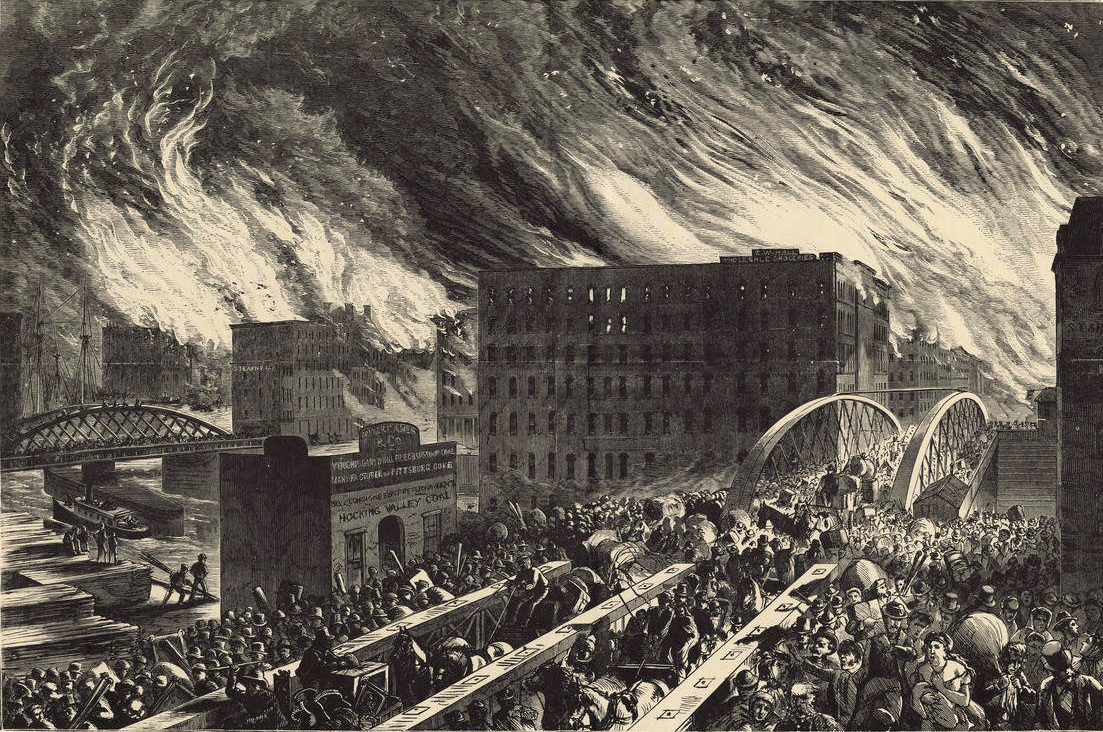
As the campaign season got underway for 1871, the British command agreed that, due to the fail of Halifax, an initial British relief force through Quebec would likely be quickly overwhelmed. However, as Britain held naval supremacy still, and Montreal was comfortably still afloat, the British opted for a hit and run strategy on the American coast, and an initial attack on Boston was wildly successful, burning the city to the ground. This was combined with British reinforcements counter attacking from Quebec, forcing the US back across the Saint Lawrence. British cavalry from Winnipeg created a reign of terror in the northern border regions, and even towards the western states. To cap off a highly successful year, the United Kingdom occupied New Orleans, closing the interior to the vital river traffic (few railroads had made it this far west).
The United Kingdom, content that the United States had been humiliated, attempted to make peace in early 1872, desiring to return to the European situation that had spiralled out of control between France and the new German empire. The terms though would be unacceptable to the United States, and the Americans desired to fight on. The British began a siege of New York, and started the preparations for the invasion of the American Pacific. However, in a major show of national unity, a flood of Southern militia soldiers marched north to the aid of the Army, and in the bloodiest battles of the entire war, forced the British back to New England. This defeat forced Britain back to the negotiating table. In the end, the Treaty of Brest required that the numerous territorial disputes on the American-Canadian border would be resolved in favor of Britain, acknowledged that Britain had the right to intervene in the Western hemisphere, and required the emancipation of American slaves. The United States was also forced to both pay a major financial immendity, and take responsibility for starting the war.
The defeat by the hands of Britain had brought many of the American regional tensions. long suppressed by imperial ambitions and victory, to the forefront of public life once more. There was a dispute on the amount that each state would have to pay as a part of the war reparations, and governors were becoming increasingly frustrated over the strength of the federal government. As one prominent Southern governor noted “Why should we give up slavery? They beat the Yankees, not the South”. It seemed that the situation was spiralling out of control, until one prominent general, James Hull, the daring cavalry commander that had won the Battle of Big Horn against the British in the Western theater, came to the forefront of national politics. Striking a tone of reconciliation and recovery, Hull’s proposals were designed to lessen the impact on Americans by focusing increased taxes on the Japanese, and, in a nod to the plantation aristocracy, creating a “maximum wage” that certain agricultural workers could make. While this was designed to only impact the freed African slaves, poor whites in the south would see their wages drop as well, and would eventually leave to settle in the West. However, this effect would not be felt until later, and, after promising significant increases in local autonomy to the governors, James Hull was elected president in 1872. Of significant note, this was the first time that the Democrats had been challenged seriously since the 1830s, and the overall failure of the opposition to coalesce around one single candidate would waste the most promising chance there had been to defeat the Democratic Party.















